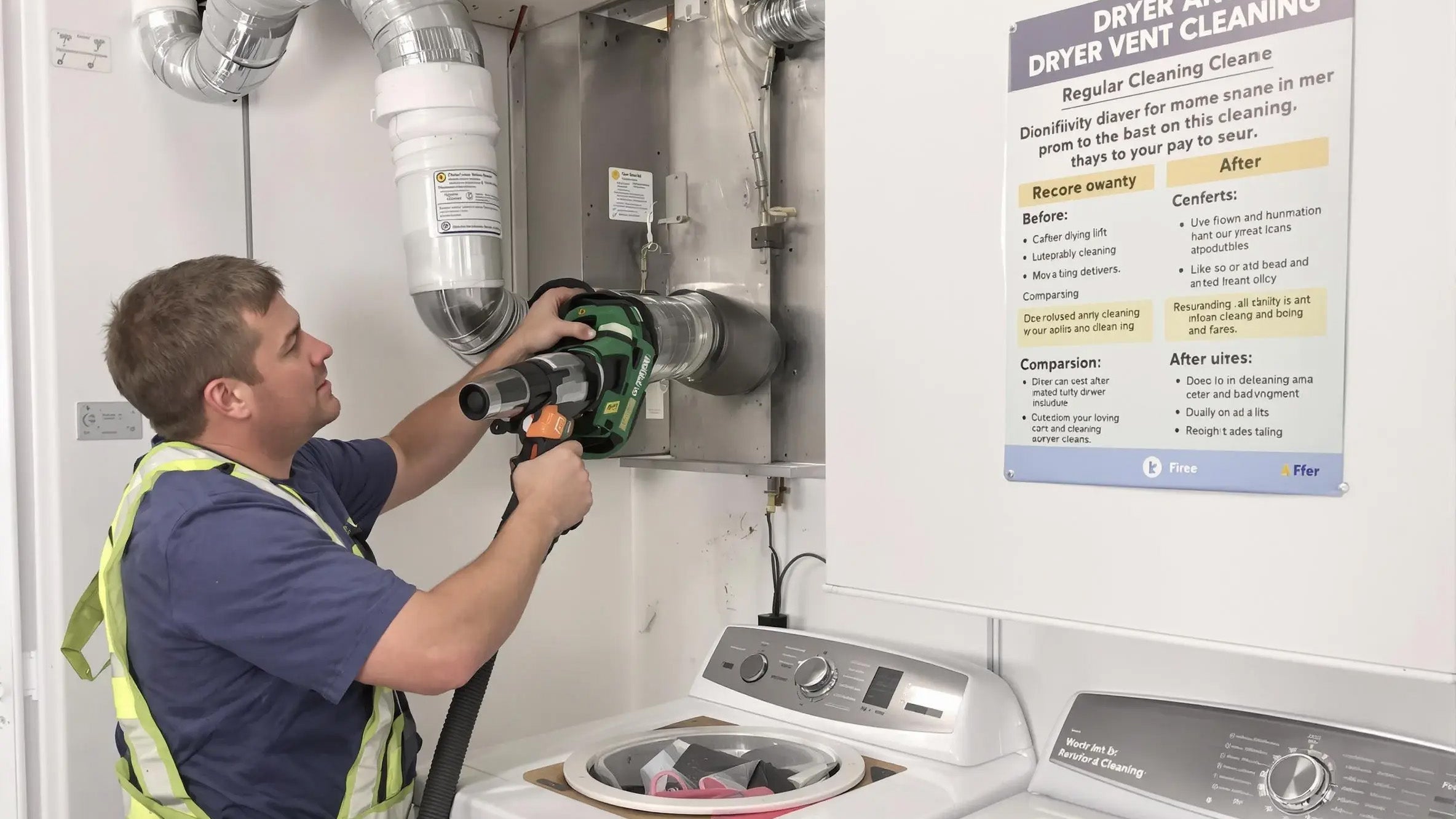Understanding Dryer Vent Length and Airflow
The main function of a dryer vent is to expel moist, hot air from the dryer to the outside of your home. If the vent is too long or has too many turns, the airflow becomes restricted. This not only reduces drying efficiency but can also increase lint buildup — a leading cause of dryer fires.
Maximum Dryer Vent Length Guidelines
Most building codes and manufacturers provide a maximum dryer vent length recommendation. A standard rule of thumb is:
- For rigid metal ducts, the maximum length is 35 feet if there are no bends.
- For every 90-degree bend, subtract 5 feet from the total.
- For every 45-degree bend, subtract 2.5 feet.
For example, if your dryer vent has two 90-degree turns, your maximum effective length should be no more than 25 feet. You can calculate the effective length of your dryer vent by using the calculator below.
Dryer Vent Effective Length Calculator
Flexible foil or plastic ducts are not recommended for long runs because they create more resistance and trap lint easily. If your vent path is complex, using rigid or semi-rigid aluminum ducts helps maintain stronger airflow and reduces fire hazards.
How Bends Affect Airflow
Each bend or turn in your dryer duct causes airflow turbulence. Instead of moving smoothly, the air swirls inside the duct, slowing down the overall velocity. This means lint, moisture, and heat have a harder time escaping.
If your vent run includes multiple sharp turns, the dryer has to work harder to push air out, increasing wea ear on the motor and heating elements. Over time, this can lead to:
- Longer drying times
- Higher energy consumption
- Increased lint buildup
- Risk of overheating or fire
To minimize this, keep bends as gentle and minimal as possible. Use wide-radius elbows instead of sharp 90-degree joints whenever you can.
If your dryer is far from an exterior wall, consider installing a dryer vent booster fan. This small inline fan helps maintain strong airflow in long duct runs.
Final Thoughts
The ideal dryer vent length depends on your home’s layout, but shorter is always better. Aim to stay within 25–35 feet total, including bends, and use rigid metal ducts whenever possible. Keeping your vent path straight, smooth, and clean ensures optimal dryer performance, lower energy bills, and greater safety.
Dryer Vent Length & Bend Rules — FAQ

1. What is the maximum recommended length for a dryer vent?
Most guidelines recommend a maximum of 35 feet for a straight dryer vent run when using rigid metal ducting. This number decreases when you add bends.
2. How do bends (elbows) affect the allowable dryer vent length?
Bends increase airflow resistance, which reduces the allowed length.
Industry-standard deductions:
- 90° elbow = subtract 5 ft
- 45° elbow = subtract 2.5 ft
Example:
16 ft run + two 90° bends → Effective length = 35 – 10 = 25 ft
3. What happens if my dryer vent run is too long?
An excessively long vent can cause:
- Longer drying times
- Lint accumulation
- Higher fire risk
- Reduced dryer efficiency
- Possible dryer overheating or shutdown
If your run exceeds the allowed length, consider rerouting or using a booster fan.
4. How can I reduce the effective length of my vent run?
- Replace flexible ducts with rigid metal ducts
- Minimize unnecessary bends
- Use two 45° bends instead of one 90° bend
- Shorten the run by relocating the vent exit
- Install a low-profile dryer vent box to bring the dryer closer to the wall.
5. Can I use flexible foil or plastic dryer ducts?
Flexible foil and plastic ducts are generally not recommended because they:
- Trap lint easily
- Reduce airflow
- Are more likely to overheat
- Are prohibited by many building codes
- Rigid metal ducts provide the best airflow and durability.
6. How do I know if my dryer vent has poor airflow?
Common symptoms include:
- Clothes take more than one cycle to dry
- Hot laundry room / dryer overheating
- Burning smell
- Lint around the vent opening
- Vibrations or rumbling during operation
A simple test: place your hand near the exterior vent while the dryer is running. Weak airflow indicates a problem.
7. What should I do if I must exceed the recommended vent length?
If you cannot shorten the run:
- Install an inline dryer booster fan
- Ensure all elbows are smooth metal
- Use a 6-inch diameter duct (if your dryer allows) to reduce static pressure
- Schedule more frequent cleanings
8. How often should a long vent run be cleaned?
- For standard vents: once a year
For long or bend-heavy vents: every 3–6 months
If you have pets or use the dryer frequently, clean more often.
9. Do gas and electric dryers have different vent length limits?
The vent length rules apply to both, but gas dryers require better airflow because improper venting may cause exhaust fumes to reenter the home. Keeping the vent within guidelines is especially important for gas units.
10. Can a longer dryer vent damage the dryer?
Yes. Long or restrictive vents can cause the dryer to:
- Run hotter
- Wear out heating elements faster
- Use more electricity
- Automatically shut down due to thermal overload
- Maintaining proper airflow extends your dryer's lifespan.




